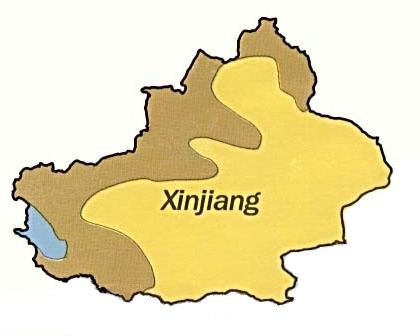Native speakers 16,000 (2000) ISO 639-3 srh | Writing system Arabic Glottolog sari1246 | |
 | ||
Language family Indo-EuropeanIndo-IranianIranianEasternShugni–YazgulamiShughnaniSarikoli | ||
The Sarikoli language (also Sariqoli, Selekur, Sarikul, Sariqul, Sariköli) is a member of the Pamir subgroup of the Southeastern Iranian languages spoken by Tajiks in China. It is officially referred to in China as the "Tajik language", although it is different from the language spoken in Tajikistan.
Contents
Nomenclature
Sarikoli is officially referred to as "Tajik" (塔吉克语 Tǎjíkèyǔ) in China. However, it is not closely related to Tajik as spoken in Tajikistan. It is also referred to as Tashkorghani, after the ancient capital of the Sarikoli kingdom (now Tashkurgan Tajik Autonomous County in Xinjiang, China); however, this usage is not widespread among scholars.
The earliest written accounts in English, from the 1870s, generally use the name "Sarikoli".
Distribution of speakers
The number of speakers is around 35,000; most reside in the Taxkorgan Tajik Autonomous County in southern Xinjiang Province, China. The Chinese name for the Sarikoli language, as well as the usage of Sarikol as a toponym, is Sèlèkùěr yǔ (色勒庫爾語). Speakers in China typically use Uyghur and Chinese to communicate with people of other ethnic groups in the area. The rest are found in the Pakistani-controlled sector of Kashmir, closely hugging the Pakistan-Chinese international borders.
It is mutually unintelligible with the related Wakhi language.
Orthography
The language has no official written form. Gawarjon, publishing in China, used IPA to transcribe the sounds of Sarikoli in his book and dictionary, while Pakhalina, publishing in Russia, used an alphabet similar to that of the Wakhi language in hers. The majority of Sarikoli-speakers attend schools using Uyghur as the medium of instruction.
Vowels
Sarikoli vowels as used in Russian works (IPA values in brackets):
a [a], e [e], ɛy [ɛi̯] (dialectal æy or ay [æi̯ / ai̯]), ɛw [ɛu̯] (dialectal æw or aw [æu̯ /au̯]), ə [ə], i [i], o [o / ɔ], u [u], ы [ɯ] (dialectal ů [ʊ]). In some dialects also long variants of those vowels can appear: ā, ē, ī, ō, ū, ы̄, ǝ̄.
Consonants
Sarikoli has 29 consonants:
Sariqoli consonants according to Russian Iranologist transcription (IPA values in bracelets): p /p/, b /b/, t /t/, d /d/, k /k / c/, g /ɡ ~ ɟ/, q /q/, c /ts/, ʒ /dz/, č /tɕ/, ǰ /dʑ/, s /s/, z /z/, x̌ /x/, γ̌ /ɣ/, f /f/, v /v/, θ /θ/, δ /ð/, x /χ/, γ /ʁ/, š /ɕ/, ž /ʑ/, w /w/, y /j/, m /m/, n /n / ŋ/, l /l/, r /r/
Stress
Most words receive stress on the last syllable; however, a minority receive stress on their first syllable. Also, several noun declensions and verb inflections regularly place stress on their first syllable, including the imperative and interrogative.
Vocabulary
Although to a large extent the Sarikoli lexicon is quite close to those of other Eastern Iranian languages, but a large number are words are special to Sarikoli and the closely related Shughni, that are not found in other Eastern Iranian languages like Wakhi, Pashto or Avestan.
